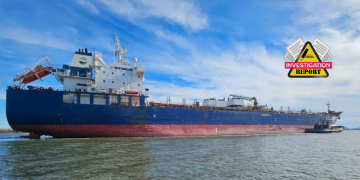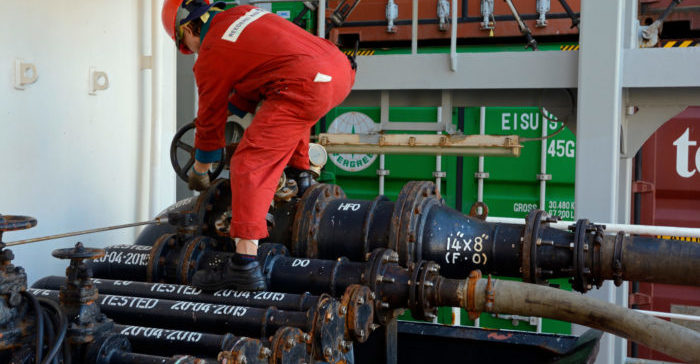For STCW, official documents that prove crew members onboard have obtained the required level of maritime education and training, have professional competence for service at sea, the appropriate age and have undergone medical examinations are of outmost importance to ensure compliance with the Convention.
- STCW Convention at a glance
- STCW Convention: Terms and Definitions
- Certificates needed for compliance with STCW
- How seafarers can get their STCW certificates
- STCW Convention: General requirements for officers
- STCW Convention: General requirements for ratings
- STCW: How to obtain a certificate of competency as Master
- STCW: How to obtain a certificate of competency as Chief Mate
- STCW: How to obtain a certificate of competency as Navigational Watch
- STCW certificates according to function and type of vessel
- Training issues under STCW: What you should know
- STCW: Certificates and documentary evidence needed onboard
- Alcohol and drug consumption onboard: Taking prevention measures
- STCW: Setting the hours of rest for watch personnel
As such, seafarers need to hold the following certificates to verify that all requirements of the convention are met:
- certificates of competence
- endorsements
- certificates of proficiency
- and any other documentary evidence.
As already mentioned, under the STCW Convention, all seafarers need to meet minimum standards of competence, age, medical fitness, and approved sea-going service. These standards are set by each national administration, but as a minimum, they should reflect STCW standards. The certificates that seafarers are required to hold depend on their rank, responsibilities on board, and the type of vessel.
Before any seafarer joins a ship, he/she needs to make sure that all valid certificates are in place. As such, to obtain an STCW certificate, he/she needs to successfully have completed a training programme approved by the issuing administration or to complete a period of approved seagoing service. For most certificates, a combination of both is needed. Certificates are issued once seafarers are able to prove their competence in and knowledge of the tasks covered and will be subject to inspection by the master, flag state and port state inspectors.
[adrotate banner="304"]
1.Certificate of competence
A document issued to masters, officers, radio operators and ratings forming part of a watch who meet the standards of competence relevant to their particular functions and level of responsibility on-board.
2 Endorsement
A document issued to masters and officers which endorses that the national certificate has been issued in accordance with all STCW requirements.
In 2010, the amended STCW Convention adopted substantial changes in regulation I/2 to tighten up on the endorsement process, requiring that all endorsements are only issued by the administration on the condition that
- Firstly, there is full verification of the authenticity of any certificates and documentary evidence
- Secondly, that the candidate has fulfilled all requirements and has the standard of competence for the capacity identified in the endorsement.
- Thirdly, proper approval of the equivalent seagoing service and training is ensured and
- Lastly, a database of certification registration with a controlled electronic access is maintained
Title of the certificates under STCW
| Capacity | Area Limitation | Tonnage Limitation |
| Master | Near Coastal
None None |
Less than 500gt
Less than 3,000gt None |
| Chief Mate | None
None |
Less than 3,000gt
None |
| Office in charge of navigational watch (OOW) | Near Coastal
None |
Less than 500gt
None |
| Rating forming part of a navigational watch | None | None |
| Radio Operator | GMDSS (GOC/ROC) | None |
| Capacity | Area Limitation | Tonnage Limitation |
| Chief Engineer | None
None Near Coastal Near Coastal |
700Kw to 3,000Kw
3,000Kw or more 750Kw to 3,000Kw 3,000Kw or more |
| Second Engineer | None
None Near Coastal Near Coastal |
700Kw to 3,000Kw
3,000Kw or more 750Kw to 3,000Kw 3,000Kw or more |
| Office in charge of engineering watch (OOW) | None
Near Coastal |
750Kw to 3,000Kw
Less than 3,000kw |
| Electro-technical officer (ETO) | None | None |
| Rating Forming part of an engineering watch | None | None |
| ETR | None | None |
[box] Endorsement of recognition
Considering that many merchant fleets are manned by seafarers certificated by other administrations, STCW requires also an endorsement certificate which is issued by an administration and serves as an official recognition of the validity of a certificate issued by another administration. For example: if a seafarer holds a certificate from country ‘x’, but he/she is serving on a ship registered in country ‘y’ , then he/she needs to apply to the maritime administration of country ‘y’ for a certificate authorizing him/her to serve on ships registered under its flag.
To obtain an endorsement of recognition:
- submit the original of your national certificate of competence to the representative of the issuing administration.
- Administrations will also require proof of identity. In most cases you will have to pay a processing fee that will vary depending on the type of certificate being endorsed and the charges set by different administrations.
- If you are employed, the employer (shipowner or manning agent) will normally take care of all the necessary paperwork and fees. Even though it is not a requirement of the convention, there are a number of administrations that are now requiring a letter of employment as part of the documentation necessary to process an application for an endorsement of recognition.
It is worth noticing that the way to submit an STCW endorsement of recognition varies from administration to administration while masters, chief mates, chief engineers or second engineers applying for the document are also required to demonstrate knowledge of the maritime legislation of the flag state issuing the endorsement.
[/box]
3.Certificates of proficiency
These certificates certify that a seafarer meets STCW standards of competence in specific functions related to safety, care of persons, or cargo. Namely, they include certificates for personnel serving on certain types of ship (tankers, and passenger ships) and for those assigned with safety, security and pollution prevention duties.
4.Documentary evidence
This document is not necessarily issued or recognized by the administration; this is why it is not called ‘certificate’. For example, these can be documents issued by the shipowner or master of the vessel to attest that the seafarer has participated in a safety drill or has completed some type of training.
It is important to keep these documents since they are one of the accepted ways of demonstrating that seafarers have achieved proficiency in a given task (basic safety training, for example). Where such evidence is not available of on-board training and experience, they will be required to undergo a five yearly refresher course in personal survival and fire prevention and firefighting.
Whilst the security officer will require a certificate of proficiency, security familiarisation and security awareness are ship specific requirements that will require the seafarer to have documentary evidence. As is the case with the seafarer with designated security duties, it is the company’s or security officers’ responsibility to ensure crew are trained to the minimum standard within the amended convention and have the appropriate documentary evidence.





























































